
Desktop PCs and portability don’t traditionally go hand in hand which is why I’ve always been a fan of the best mini PCs. Sure, you could build a small form factor PC with a handle but then, you end up paying a premium for smaller, less readily available parts. I would know, as I once downsized an already small gaming PC into a case that was compact enough to fit in a backpack while moving between countries.
Don’t get me wrong, the best laptops and the best gaming laptops are certainly the more logical option when it comes to portability. However, as I grew up back when laptops were quite chunky and seriously underpowered compared to their desktop counterparts, I’ve always preferred using a desktop over a laptop. Heck, I went so far as to bring a mini PC with me to Computex earlier this year so that I’d have something closer to my own desk setup when I got back to the hotel.
Besides growing up using a family PC in the living room, I’ve always liked the fact that with a desktop, you can bring your own accessories. For instance, I work my best when I have a mechanical keyboard and a trackball mouse in front of me, two things you’ll rarely find on a laptop.
While I love their portability, most mini PCs aren’t that expandable. With Thunderbolt 4 and USB4 though, you can now connect an external graphics card to even more mini PCs. However, what if you want more functionality besides a graphics card for playing games or doing creative work?
Well, I just tested a mini PC that’s small enough to fit in my pocket but can also transform into a workstation or even a gaming rig. Here’s what it’s been like trying it out for the past week and why it feels like one direction the future of computing could potentially take.
A tiny PC that can scale to your workflow
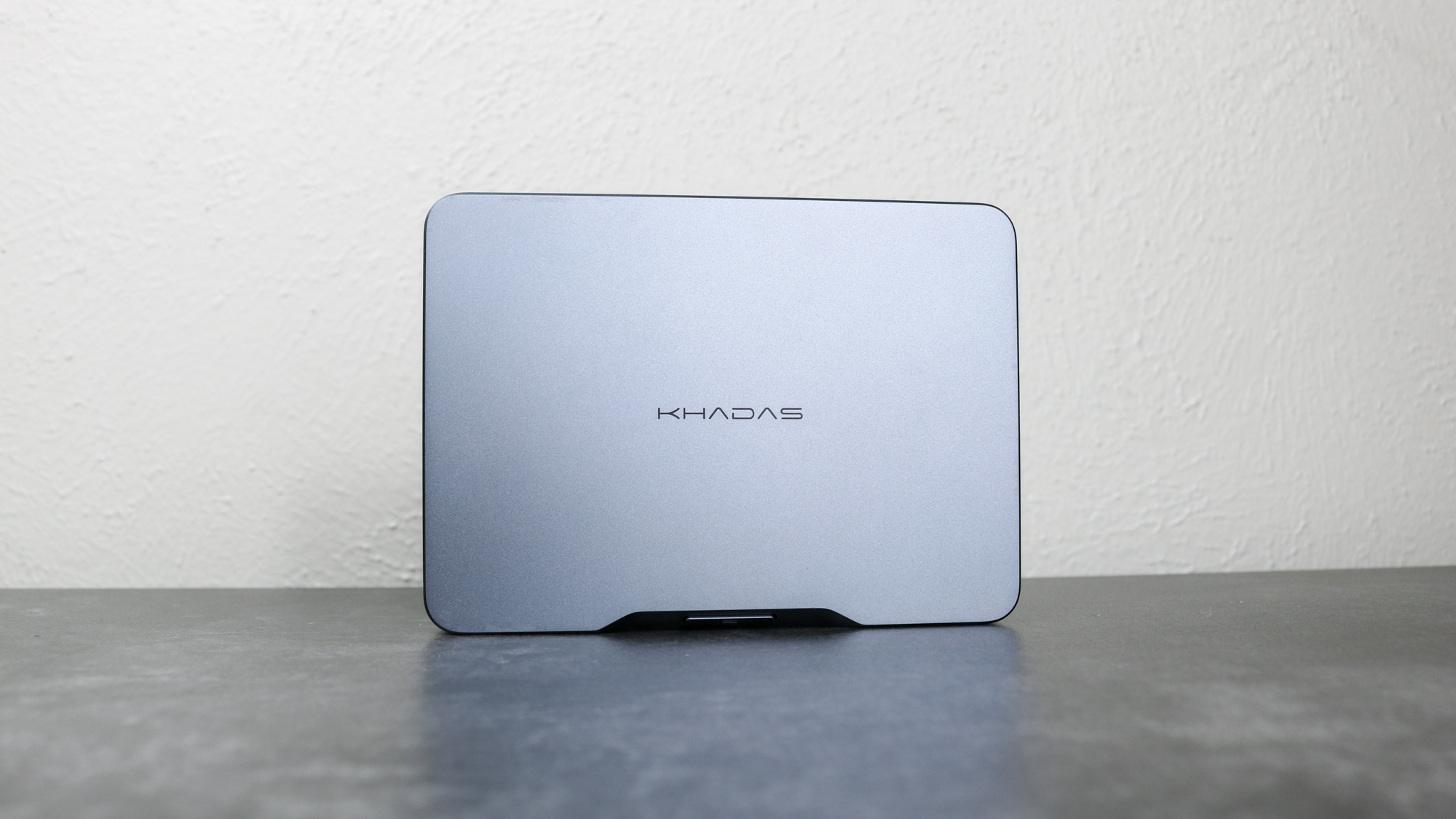
Even though it looks a lot more like one of the best external hard drives than a computer, the Khadas Mind is actually a full-fledged mini PC. It’s absolutely tiny at 5.74 x 4.13 x 0.79 inches but it still manages to pack in two USB-A ports, two USB-C ports and an HDMI port. There’s even a built-in 5.5Wh battery but more on that later.
Just like with Apple’s Mac Mini, the Khadas Mind has a unibody design with an anodized aluminum finish. Under the hood, it’s powered by either an Intel Core i5 or Core i7 processor along with 16GB or 32GB of DDR5 RAM. You can go with either a 512GB or 1TB SSD but on the underside, there’s also a magnetic slot to add an extra M.2 SSD. One of my favorite things about the Khadas Mind so far though is that it’s powered by a USB-C port instead of the barrel-port connectors you find on most other mini PCs.
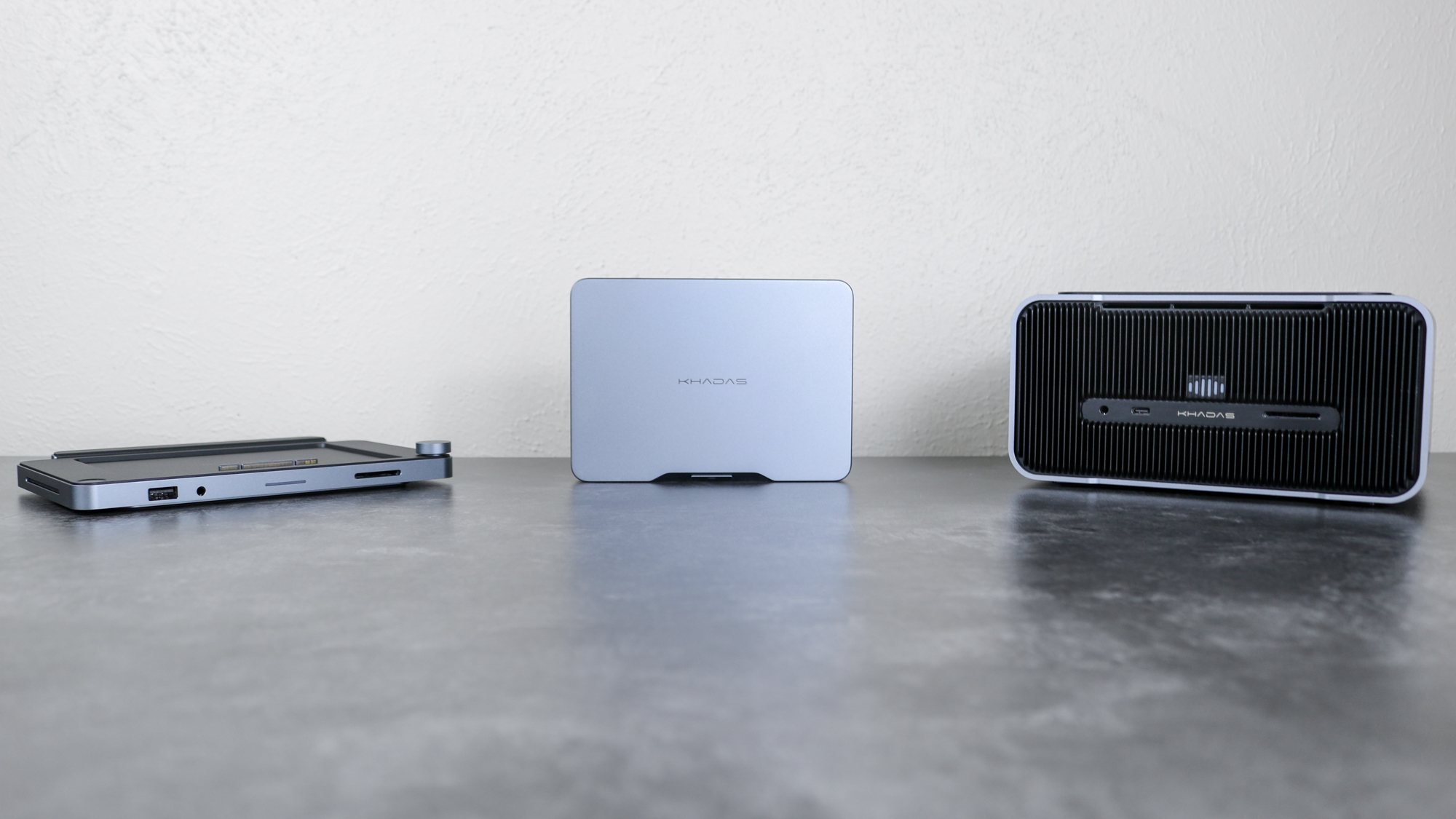
Though you can absolutely use the Mind as is, Khadas also has two different docks you can magnetically attach it to: a standard dock with more ports, a fingerprint reader, an SD card reader, a volume knob and support for multiple displays or a much beefier graphics dock that adds a Nvidia RTX 4060 Ti graphics card, built-in speakers and a slew of additional ports at the back.
Khadas sent over both of them along with the Mind for review and over the past week, I’ve been building out different setups to make use of all three devices. You see, while you can work for 20 minutes or so off of the Mind’s built-in battery, it’s actually intended to keep the device in sleep mode for when you want to move it from one desk setup to another or switch between docks. Even with a 5.55Wh battery, the Mind has a standby time of up to 25 hours when in sleep mode.
Keeping things minimal
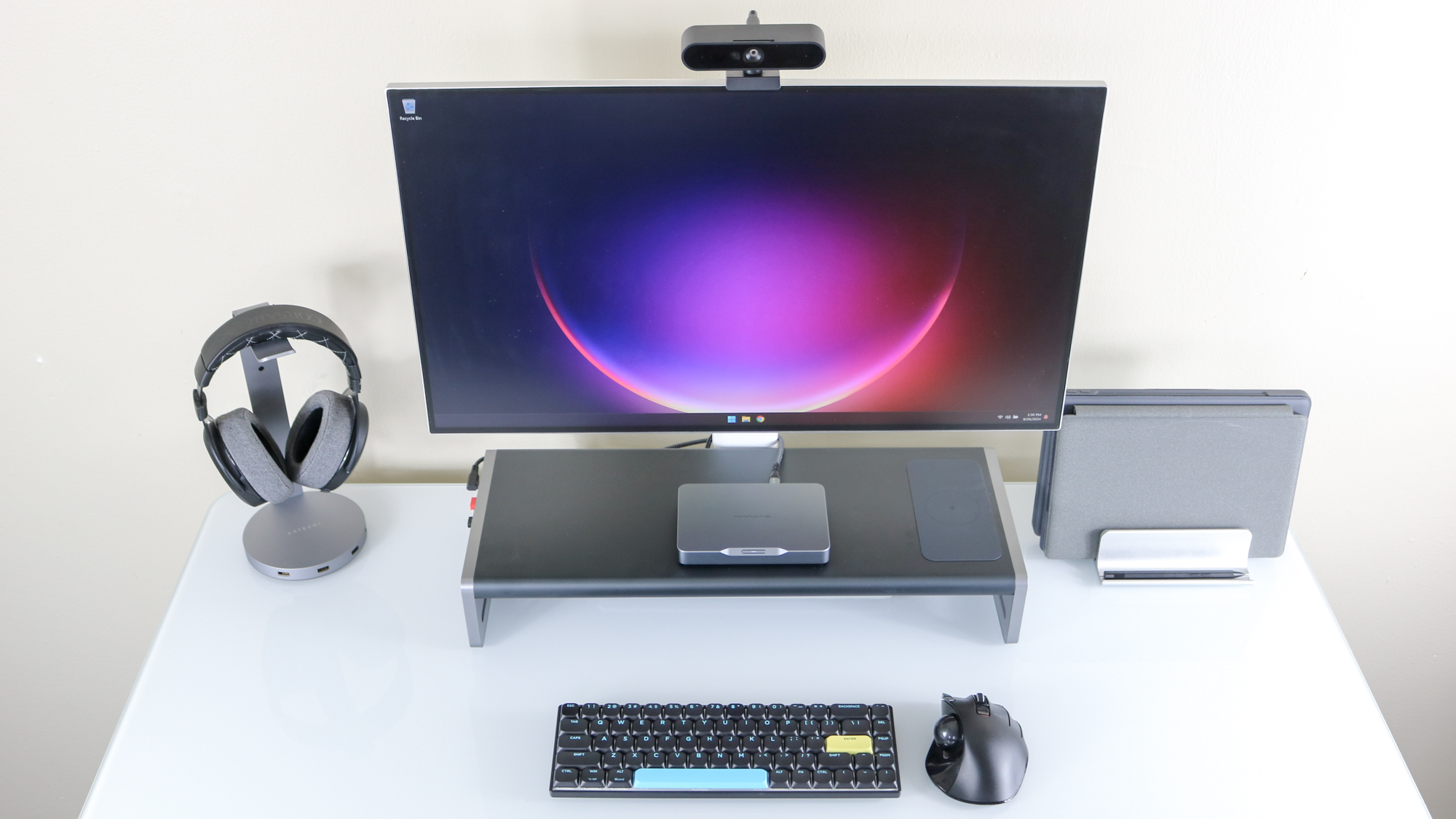
To start things off, I decided to try out the Mind with the Anker 675 laptop docking station, as I already had it set up in my office after reviewing it. I just plugged it into the docking station’s USB-C port, hit the power button and I was up and running in no time.
It runs a pretty standard version of Windows 11 without any bloatware but there is a dedicated Mind app to check for driver updates and to adjust some key settings like whether it goes to sleep or turns off when unplugged without having to do so in Windows. Besides that, this is a very clean install of Windows 11 but I do wish Khadas had thrown a few of their own wallpapers onto the Mind.
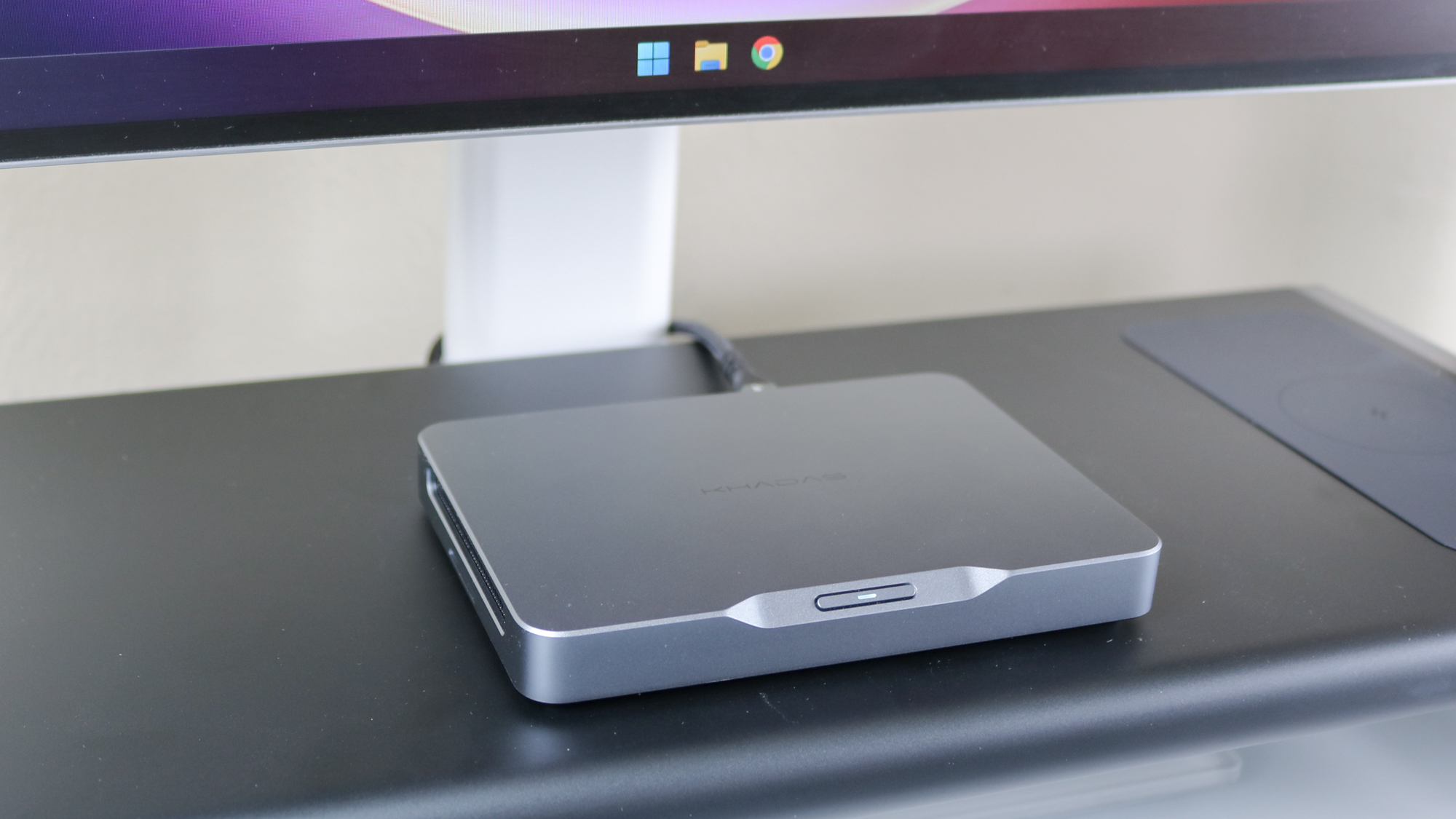
When browsing the web and doing some light work, the Mind was near silent. In fact, I never really heard any fans spin up until I plugged it into Khadas’ Mind Graphics dock. If you already have a laptop docking station like this one incorporated into your desk setup, you can just plug in the Mind and you’re ready to go. If you don’t, you can use the included 65W power adapter and USB-C cable to connect it to your monitor or TV.
Although I haven’t take any pictures yet, you can also power the Mind off of one of the best monitors with a USB-C port, granted it has power delivery and puts out 65W. I did just that with my Samsung M5 monitor and everything worked just like it did when connected to my laptop docking station.
Becoming a workstation
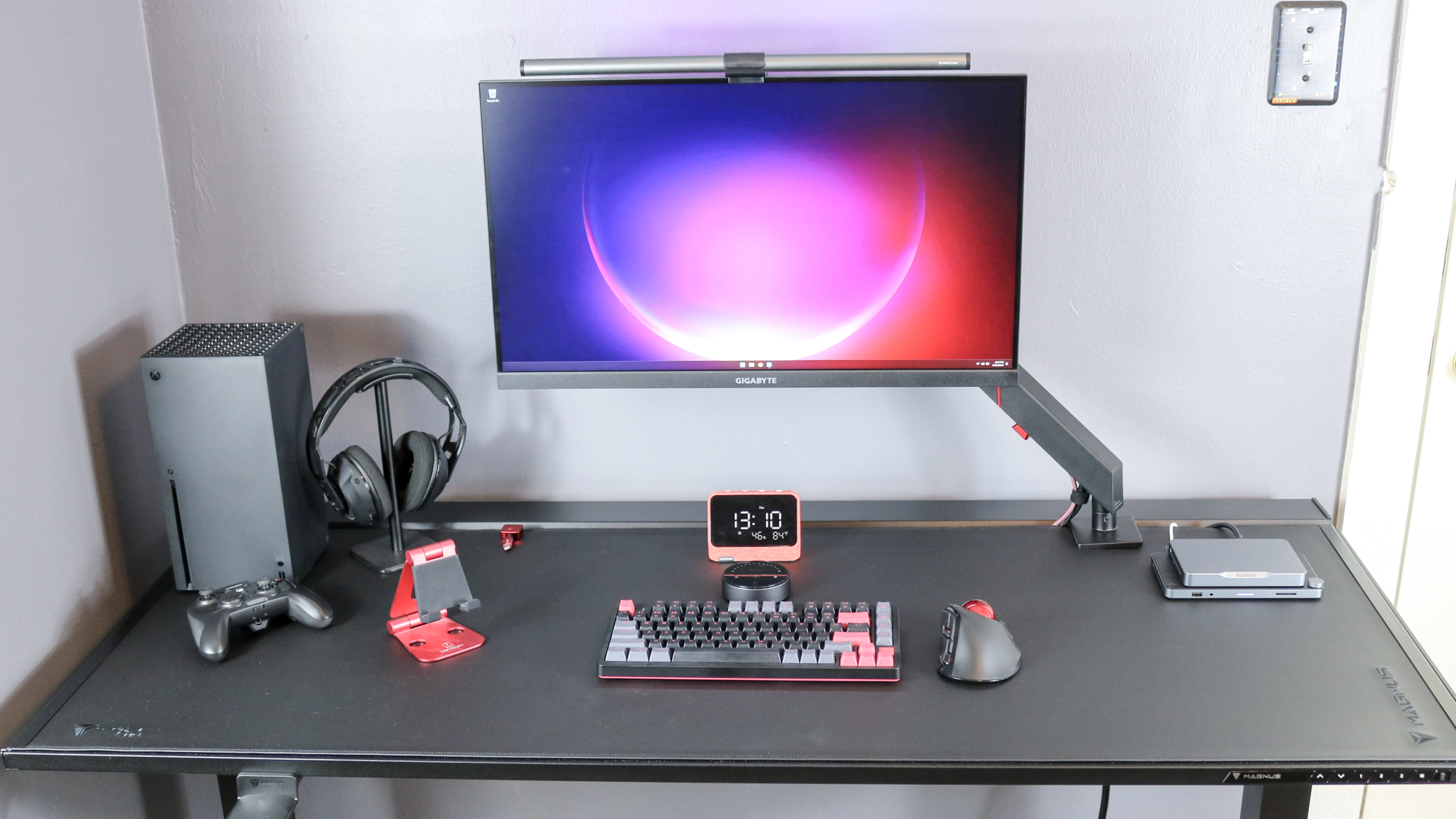
Now if you want more ports and extra features, you can also magnetically attach the Mind to the Mind Dock. It’s quite thin and features a rubber base so that it doesn’t slide around on your desk. As I have a dedicated gaming setup in the room next to my office, I decided to try it out with the Secretlab Magnus Pro standing desk.
The fact that I could pick up the Mind and easily move it between rooms and desk setups was one of the things that drew me to this particular mini PC in the first place. While I work from home, you could in theory use this mini PC at the office, throw it in your bag and then quickly get it up and running at home if your company lets you Bring Your Own Device.
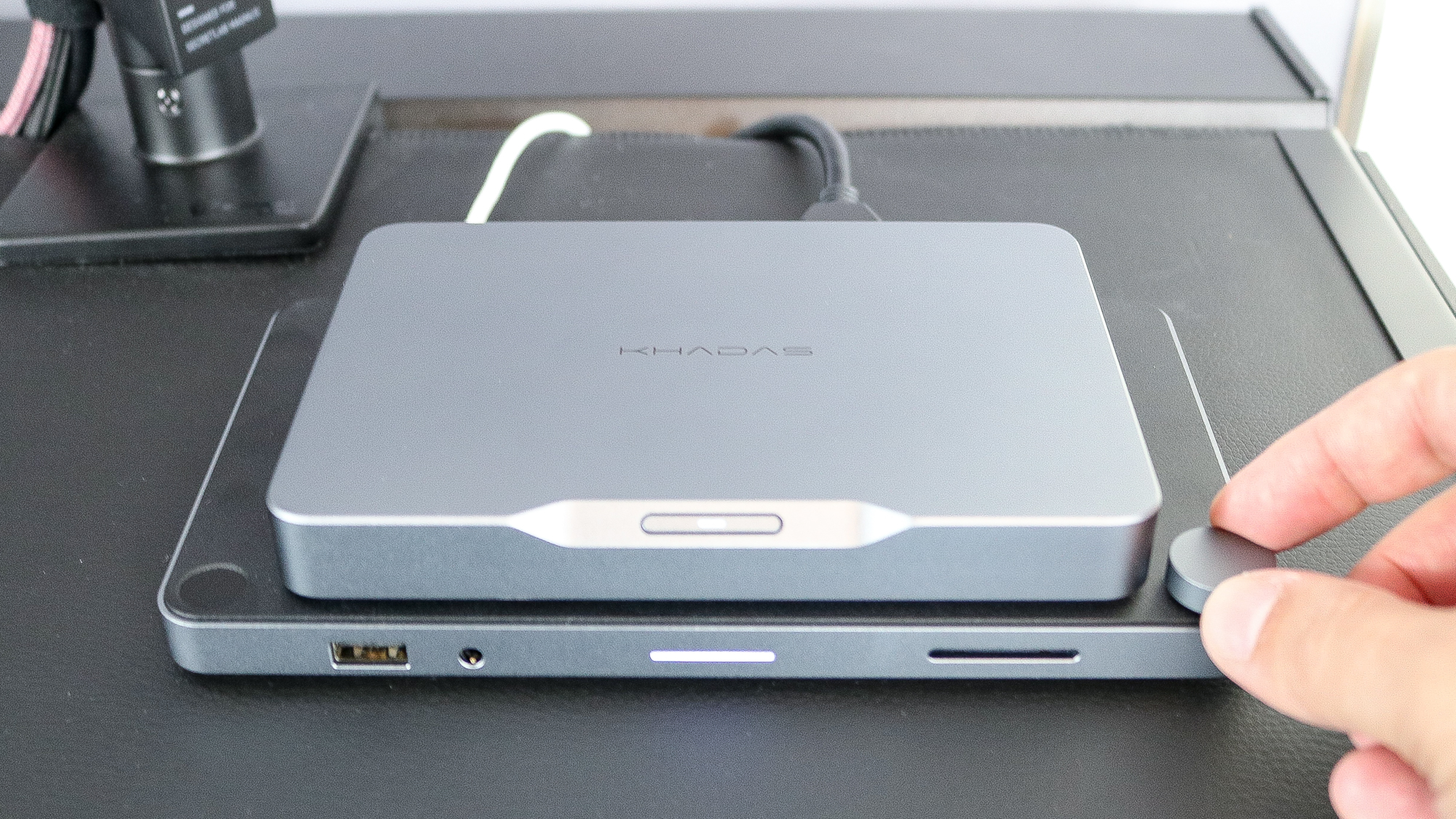
The Mind Dock adds an extra USB-A port, an SD card reader and a 3.5mm audio jack up front along with a fingerprint reader on the left for Windows Hello and even a volume knob on the right. On the back, you get another USB-C port (for power), two USB-A ports, two HDMI ports and an Ethernet port.
The Mind is already a workstation in its own right but the Mind Dock takes things to the next level with support for multi-monitor setups, seamless logins via its fingerprint reader and Ethernet for when you’d rather be hardwired to one of the best Wi-Fi routers. This also allows you to quickly switch between desk setups as you can use the Mind on its own at one and have the dock set up on the other for those times when you need more ports and functionality.
Ready for gaming
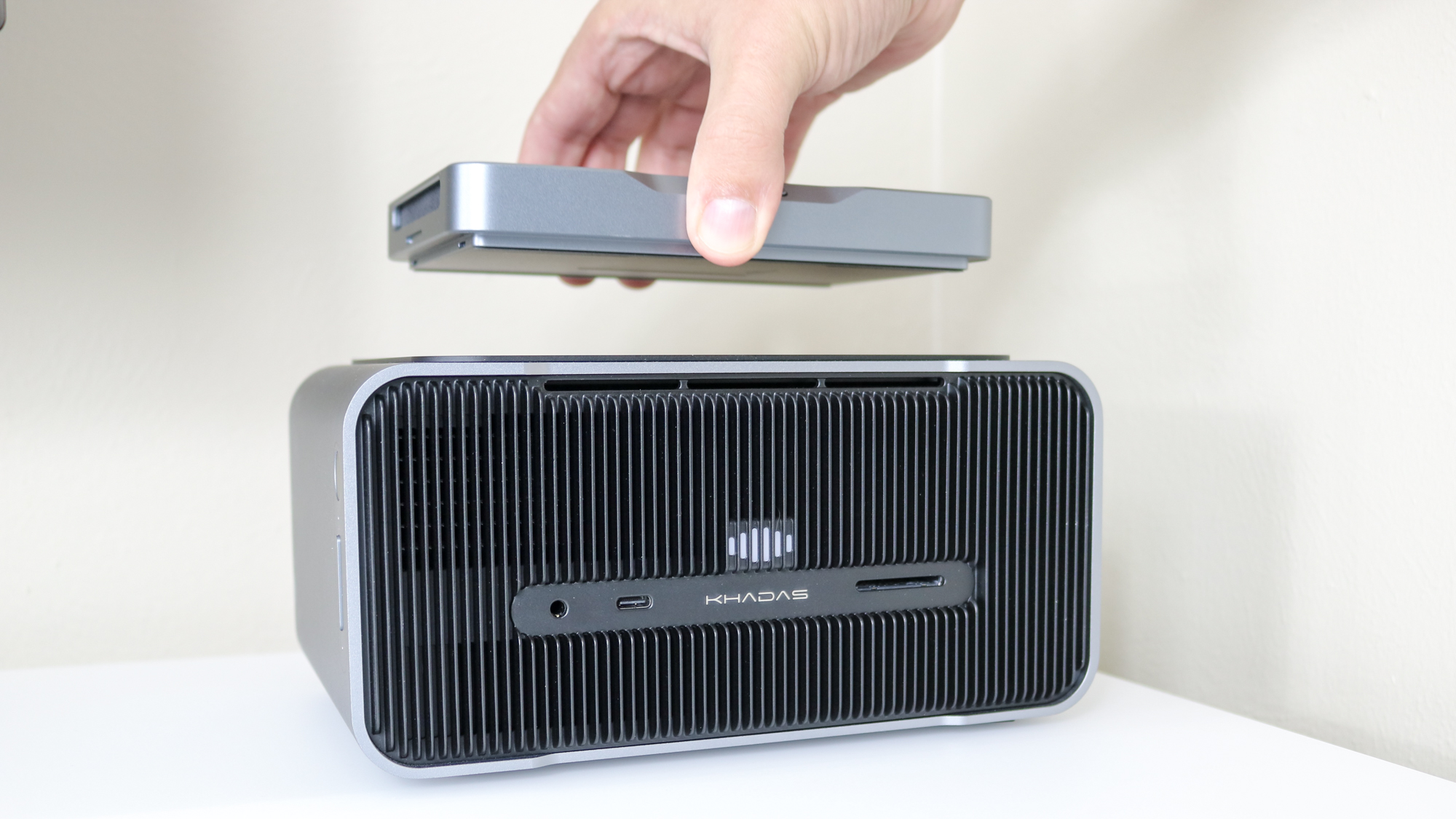
Now for the fun part. When you’re done with work for the day or if you need a bit more graphical horsepower for photo or video editing, you can attach the Mind to Khadas’ Mind Graphics dock. As I mentioned before, it features a Nvidia RTX 4060 Ti desktop GPU — with either 8GB or 16GB of VRAM — and even more ports than the much smaller Mind Dock.
On the front, there’s a 3.5mm audio jack, a USB-C port and an SD card reader along with just a splash of customizable RGB lighting right above the logo. On the right side, there’s also a fingerprint reader and volume controls for its built-in, dual speaker system. It also has a built-in far-field microphone array for those times when you’d rather talk to your computer instead of typing.
Around back, there are three USB-A ports, two HDMI 2.1 ports, a DisplayPort, an Ethernet port and a port to connect its power cord. The Mind Dock doesn’t have a bulky power adapter as it's built into its enclosure. You aren’t limited to using this dock with the Mind though. In fact, you can actually use it to boost the graphical power of any laptop or desktop as long as they feature a Thunderbolt 4 port.
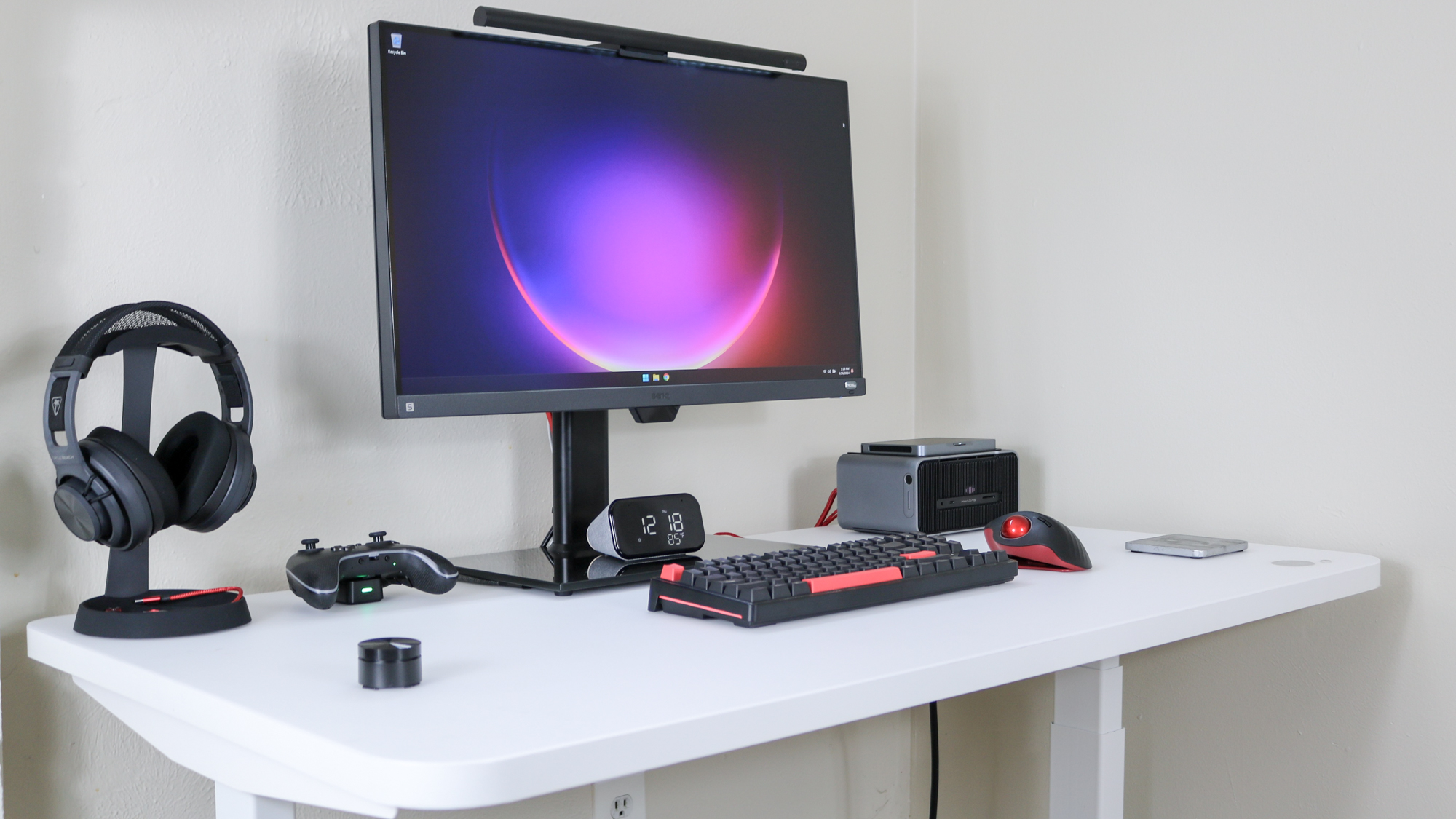
I decided to use the Mind Graphics dock in the front room of my house where I already had one of the best gaming monitors set up. It took a little finagling but once I got all the kinks worked out, I was ready to play some games on the Mind.
With a RTX 4060 Ti desktop GPU on board, the Mind coupled with the Mind Dock managed to outperform both the Asus ROG NUC 970 and the Minisforum AtomMan G7 PT I recently reviewed. This is because both of these mini PCs sport laptop graphics cards instead of their desktop variants due to size limitations. A direct comparison isn’t quite fair though as on its own, the Mind only has integrated Intel Iris Xe graphics. Still though, a first-party dock with a desktop GPU does make a big difference when you want to coax even more power out of such a tiny mini PC.
I won’t go into all the benchmarks here as I’m saving those for my full review but at 1080p, all of the best Steam games I threw at this mini PC and its graphics dock ran incredibly well with framerates above 100 fps. The Mind Dock’s fans did ramp up every now and again but not in a way that was overly noticeable or took me out of the game I was currently playing.
The desktop PC reimagined
Just like with other mini PCs, you are paying a premium for the Khadas Mind’s portability, especially if you want to pair this tiny computer with a Mind Graphics Dock. On its own, the standard version of the Mind costs $599 while the premium version with a more powerful CPU, extra RAM and a larger SSD costs $799 which isn’t actually that high for a premium mini PC.
The costs can go up by quite a bit though if you’d rather dock the Mind. While the Mind Dock costs around what you’d pay for a good laptop docking station at $179, the Mind Graphics is either $999 with 8GB of VRAM or $1,099 with 16GB of VRAM. Now you could achieve something similar with a standard desktop graphics card, an external GPU dock and a power supply for slightly cheaper but it wouldn’t look nearly as good. You also wouldn’t get all the extra ports and the fingerprint reader along with the other features of the Mind Dock.
I know a lot of people would just say buy a gaming laptop or build a smaller gaming desktop but the Khadas Mind isn’t intended for most people. Instead, it’s a tiny workstation on its own, a more full-featured one with the Mind Dock or a creative workstation that can also be used for gaming with the Mind Graphics Dock.
From the moment I first heard about the Khadas Mind, I immediately saw its potential. This extremely portable mini PC lets you quickly move from one desk to another, whether that be in the same office space, around your home like how I’ve been testing it or even back and forth between school and home or from house to house.
I still need to put the Khadas Mind through more testing but for now, I’m quite impressed with its design, features and how you really can do it all with a single, modular mini PC.







